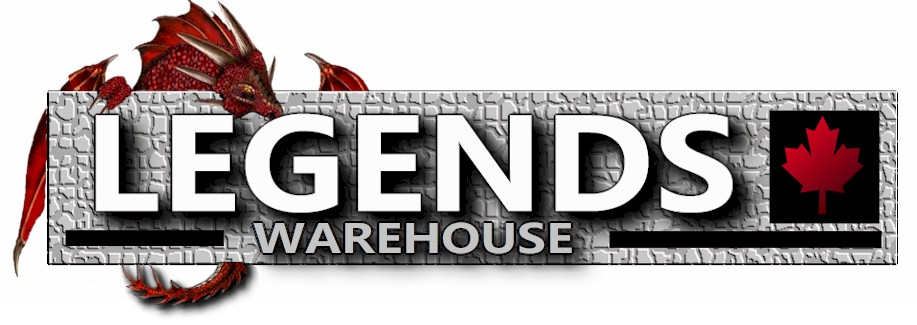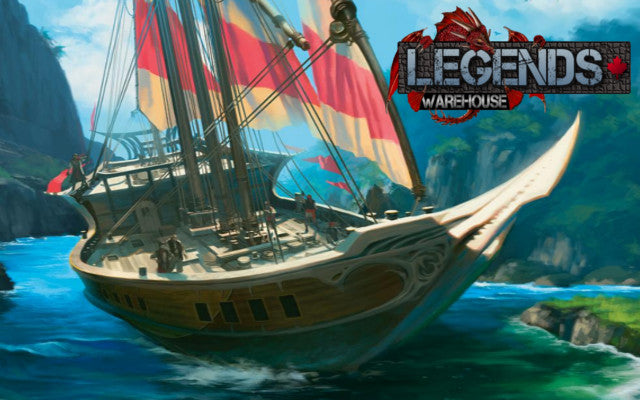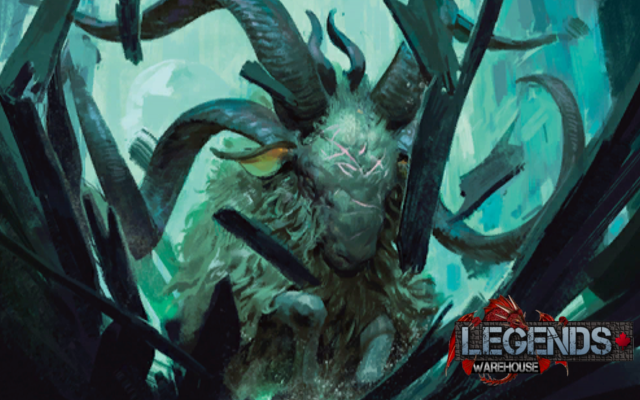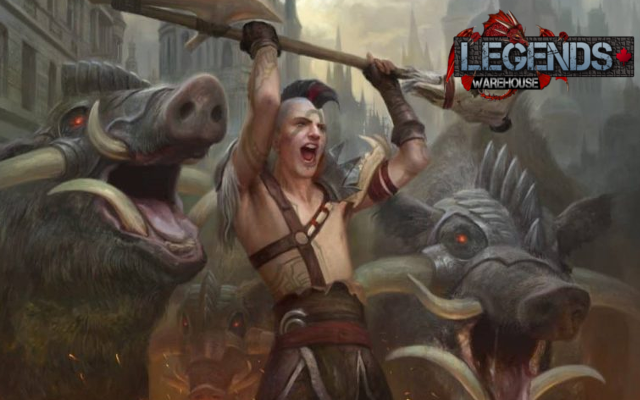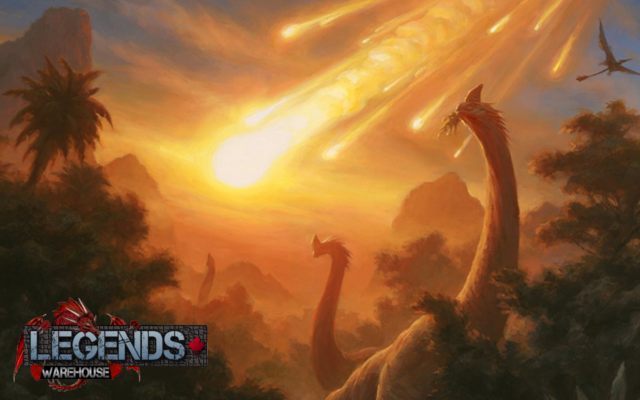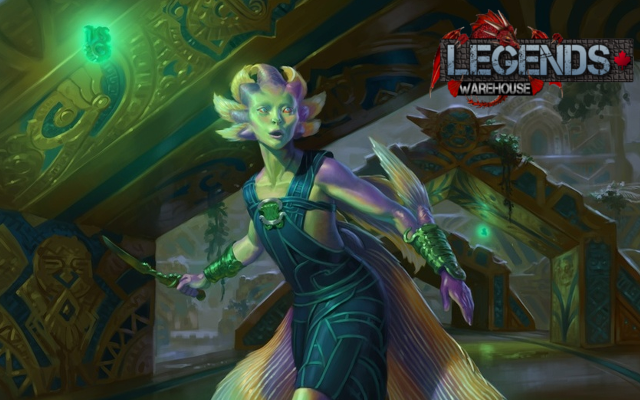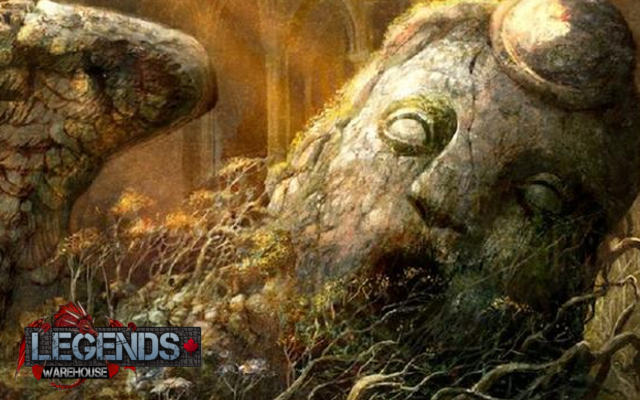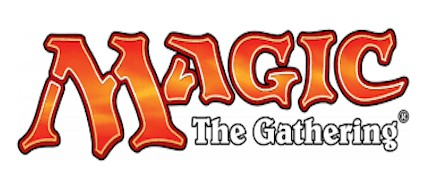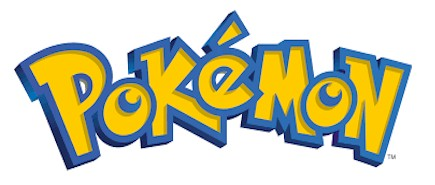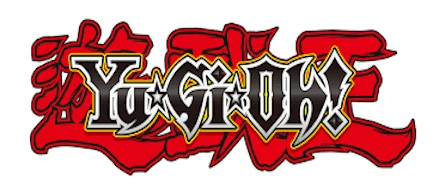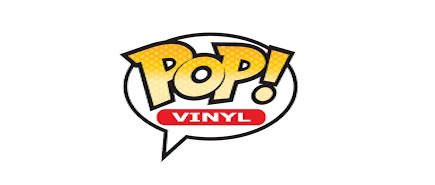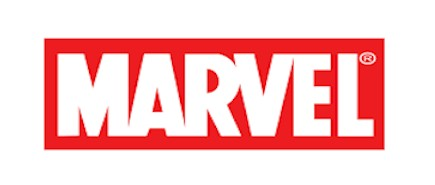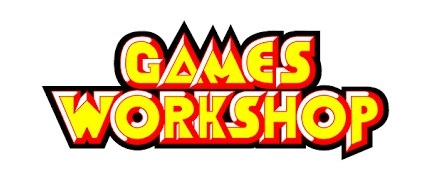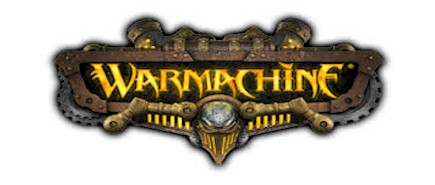Shiver Me Standard!
- Legends Warehouse News
- 26 Sep, 2017
Ever since the days of Legends, pirates have been a casual staple of Magic. From Ramirez DePietro to the Blue pirates of Mercadian Masques, pirate decks have stayed on the sidelines as other scoundrel creature types like rogues and assassins hogged the spotlight. All that changed when Ixalan was announced and the Jack Sparrows of the  Magic community rejoiced. Not only were there pirates in the set, they were at the forefront of the design team. Seeing an opportunity to do a little skulduggery of my own, I hit the drawing board to brew up a pirate crew of my own.
Magic community rejoiced. Not only were there pirates in the set, they were at the forefront of the design team. Seeing an opportunity to do a little skulduggery of my own, I hit the drawing board to brew up a pirate crew of my own.
Pirates in Ixalan are unique in that, unlike dinosaurs which have the core game plan of playing big dinosaurs, they are pulled in two different directions. Treasure decks tend to be more controlling, focusing on accumulating treasure tokens to fuel creatures like Deadeye Plunderers, whereas the other section of the pirate population are centered around the raid mechanic. As anyone who played in Khans of Tarkir will tell you, raid is an incredibly powerful mechanic because it rewards you for doing something you would be doing anyway. Furthermore, by emphasizing playing spells in your second main phase, you make it much more difficult for your opponent to do combat since you’ll always have the threat of a combat trick open. Between the two factions, I feel like going with raid was stronger for Standard, so I started looking for the most aggressive pirate deck I could put together.
AHOY, MATEYS
- 4 Dire Fleet Captain
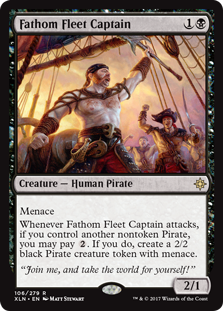

- 4 Ruin Raider
- 3 Kari Zev, Skyship Raider
- 2 Captain Lannery Storm
- 4 Deadeye Tracker
- 4 Rigging Runner
- 4 Kitesail Freebooter
- 4 Fathom Fleet Captain
- 4 Bomat Courier
- 4 Lightning Strike
- 4 Shock
- 4 Dragonskull Summit
- 5 Swamp
- 6 Mountain
- 4 Unclaimed Territory
- 3 Kari Zev’s Expertise
- 4 Duress
- 2 Abrade
- 3 Sorcerous Spyglass
- 3 Never // Return
Fortunately, the Black and Red pirates in the set are all aggressively costed to get raid active as early as possible. As such I wanted to keep the curve of the deck as low as possible to make sure I could get in under any dinosaur or control decks I might have to deal with. Ixalan brings us a pair of 1-drop pirates in Deadeye Tracker and Rigging Runner to get the ball rolling, and each one has its own ability that keeps it being useful as the game goes on. Deadeye Tracker has the ability to remove two cards in our opponent’s graveyard in order to explore. This is a fantastic ability with Torrential Gearhulk and God-Pharaoh’s Gift still in the format since it allows us to interact with whatever graveyard recursion they’re looking to do, especially since the ability targets. Rigging Runner, on the other hand, works as both a raid enabler and a raid abuser, since it can both be played on turn 1 to set up a turn 2 raid or played after attacking as a 2/2 with first strike. Both sides of the card are quite powerful in this deck, so there’s a lot of flexibility despite only costing one mana. Finally, I’ve opted to include a set of Bomat Courier to refill my hand in the late game and to trigger raid right away. This card was a staple of Ramunap Red, and I see no reason why that shouldn’t carry over into other aggressive decks post-rotation.
possible to make sure I could get in under any dinosaur or control decks I might have to deal with. Ixalan brings us a pair of 1-drop pirates in Deadeye Tracker and Rigging Runner to get the ball rolling, and each one has its own ability that keeps it being useful as the game goes on. Deadeye Tracker has the ability to remove two cards in our opponent’s graveyard in order to explore. This is a fantastic ability with Torrential Gearhulk and God-Pharaoh’s Gift still in the format since it allows us to interact with whatever graveyard recursion they’re looking to do, especially since the ability targets. Rigging Runner, on the other hand, works as both a raid enabler and a raid abuser, since it can both be played on turn 1 to set up a turn 2 raid or played after attacking as a 2/2 with first strike. Both sides of the card are quite powerful in this deck, so there’s a lot of flexibility despite only costing one mana. Finally, I’ve opted to include a set of Bomat Courier to refill my hand in the late game and to trigger raid right away. This card was a staple of Ramunap Red, and I see no reason why that shouldn’t carry over into other aggressive decks post-rotation.
The 2-drop slots are much more varied, but all carry their own weight. Dire Fleet Captain is the perfect aggro tribal creature since it gets +1/+1 for each other attacking pirate. By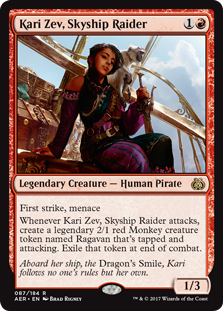 curving a 1-drop pirate into the Dire Fleet Captain on turn 2, you’re getting in for at least four damage on turn 3. As well, with Fathom Fleet Captain we are able to go wide with our team by making pirate tokens when it attacks. This can make Dire Fleet Captain into a hulking monstrosity when it attacks with very little investment. Fathom Fleet Captain and its tokens also have menace, which makes it even easier to get in chip damage around midrange decks that rely on sticking one big creature at a time. Speaking of menace, Kari Zev, Skyship Raider is conveniently enough a pirate, and with her and Ragavan we can get in for considerably amounts of damage early on by swarming around the opponent’s defenses. Finally, as a means of interacting with opposing sweepers which would devastate this deck, Kitesail Freebooter can pick away removal spells from our opponent’s hand so we can keep attacking. Brain Maggot saw a lot of play back in Journey into Nyx-era Standard, so I believe a Brain Maggot with evasion, a relevant creature type, and an additional point of toughness should be even better.
curving a 1-drop pirate into the Dire Fleet Captain on turn 2, you’re getting in for at least four damage on turn 3. As well, with Fathom Fleet Captain we are able to go wide with our team by making pirate tokens when it attacks. This can make Dire Fleet Captain into a hulking monstrosity when it attacks with very little investment. Fathom Fleet Captain and its tokens also have menace, which makes it even easier to get in chip damage around midrange decks that rely on sticking one big creature at a time. Speaking of menace, Kari Zev, Skyship Raider is conveniently enough a pirate, and with her and Ragavan we can get in for considerably amounts of damage early on by swarming around the opponent’s defenses. Finally, as a means of interacting with opposing sweepers which would devastate this deck, Kitesail Freebooter can pick away removal spells from our opponent’s hand so we can keep attacking. Brain Maggot saw a lot of play back in Journey into Nyx-era Standard, so I believe a Brain Maggot with evasion, a relevant creature type, and an additional point of toughness should be even better.
The 3-drop slot is tricky because we can’t really go too hard on it given our game plan. I 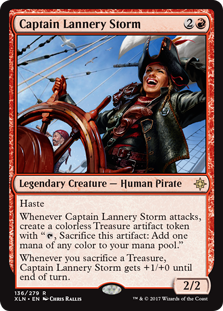 wanted to include the bare minimum at this slot in order to keep our curve as low as possible, so I decided to only have Ruin Raider and Captain Lannery Storm in those spots. Ruin Raider does a pretty impressive Dark Confidant impression by giving you an extra card at the end of your turn if you attacked. While costing one extra mana gives Dark Confidant an edge, the additional +1/+1 and pirate typing is well worth it. Ruin Raider also has the advantage of giving you the card on your turn, so if the opponent is on sorcery-speed removal you’ll at least net one card off of it, whereas Dark Confidant requires you to wait one full turn cycle. Captain Lannery Storm fought for this slot with Ahn-Crop Crasher, and while the Crasher’s exert ability to stop a creature from blocking is powerful, I feel like the treasure tokens the Captain makes are far more valuable since they can both boost her attack or let us cast additional spells. For example, we are able to cast Captain Lannery Storm on turn 3, attack for 3 and netting us a treasure token, then sacrificing the token to cast a 2/2 Rigging Runner in the second main phase.
wanted to include the bare minimum at this slot in order to keep our curve as low as possible, so I decided to only have Ruin Raider and Captain Lannery Storm in those spots. Ruin Raider does a pretty impressive Dark Confidant impression by giving you an extra card at the end of your turn if you attacked. While costing one extra mana gives Dark Confidant an edge, the additional +1/+1 and pirate typing is well worth it. Ruin Raider also has the advantage of giving you the card on your turn, so if the opponent is on sorcery-speed removal you’ll at least net one card off of it, whereas Dark Confidant requires you to wait one full turn cycle. Captain Lannery Storm fought for this slot with Ahn-Crop Crasher, and while the Crasher’s exert ability to stop a creature from blocking is powerful, I feel like the treasure tokens the Captain makes are far more valuable since they can both boost her attack or let us cast additional spells. For example, we are able to cast Captain Lannery Storm on turn 3, attack for 3 and netting us a treasure token, then sacrificing the token to cast a 2/2 Rigging Runner in the second main phase.
The spells I elected to run in the maindeck are there for their ability to pick off potential blockers and go to the face should we need to close out a game. Lightning Strike is the best card aggressive decks could ask for barring a straight up Lightning Bolt reprint. Dealing three damage is a lot, and in a pinch we can even use it to handle any planeswalkers causing us problems, which lets us save our creatures for attacking the opponent directly. Shock is in a similar spot as Lightning Strike but with the trade-off of one point of damage for costing one mana less. While this slot could easily be Fatal Push, I feel like for the first few weeks of Standard we’re going to need to run something that can beat Earthshaker Khenra, Ahn-Crop Crasher, and Jace, Cunning Castaway, especially  because we don’t have many noncombat ways of triggering revolt.
because we don’t have many noncombat ways of triggering revolt.
For the sideboard, I wanted to keep our options as tempo-oriented as possible to force our opponents to stay on the backfoot. Duress is a staple of nearly every competitive format for the sheer flexibility of taking any nonland, noncreature spell for just one mana. This is especially useful for taking away sweepers like Sweltering Suns or Fumigate the turn before they’re able to play it and stabilize the board. Never // Return and Abrade are in the deck as a means of handling creature-heavy decks so we can save our burn spells to finish off the opponent. Abrade also does double duty by handling problematic artifacts like God-Pharaoh’s Gift and Heart of Kiran should they rear their heads, whereas Never can be used on larger threats like Ripjaw Raptor, or even planeswalkers before they get out of hand. As well, Never gives us a way to handle dinosaurs without triggering enrage so they won’t get any extra value.
Sorcerous Spyglass is a necessity for shutting down planeswalkers and other activated abilities, and the fact that you get to look at their hand is just icing on the cake. This gives you information along with your disruption, much like why Kitesail Freebooter and Duress are in the deck. Spyglass also has the ability to shut off nonmana abilities of lands, so if Ipnu Rivulet, Ramunap Ruins, and even the flip lands in Ixalan start seeing more tournament play, this can stop those potential threats ahead of time. Finally, Kari Zev’s Expertise is a flavourful way of closing out the game against midrange decks. By stealing an opposing player’s biggest creature, then casting a 2-drop of our own, we can get in for an impressive amount of damage. This is ideally one of the last spells we play in a matchup like dinosaurs, but that kind of life swing shouldn’t be underestimated.
abilities, and the fact that you get to look at their hand is just icing on the cake. This gives you information along with your disruption, much like why Kitesail Freebooter and Duress are in the deck. Spyglass also has the ability to shut off nonmana abilities of lands, so if Ipnu Rivulet, Ramunap Ruins, and even the flip lands in Ixalan start seeing more tournament play, this can stop those potential threats ahead of time. Finally, Kari Zev’s Expertise is a flavourful way of closing out the game against midrange decks. By stealing an opposing player’s biggest creature, then casting a 2-drop of our own, we can get in for an impressive amount of damage. This is ideally one of the last spells we play in a matchup like dinosaurs, but that kind of life swing shouldn’t be underestimated.
Naturally, I also explored other options for the deck that may very well make it into further evolutions of the archetype. First and foremost was Hazoret the Fervent. This card is a staple of Ramunap Red, and while we can empty our hands pretty quickly, I felt like costing four mana wasn’t worth it for the first couple of weeks of Standard since I predict it will be fairly aggro-heavy. As a means of making our army even more powerful, I also toyed with Metallic Mimic, and if we need to go bigger. The +1/+1 counters can keep our creatures from trading with smaller threats, and if Zombies has taught us anything, it’s that going wide plus pump effects is a winning formula. If God-Pharaohs Gift decks continue to see high level play, Dispossess and Sentinel Totem can also see sideboard play to either exile all of their Gifts, or just their graveyards to slow them down. Finally, while on paper we’re favoured against UW Approach of the Second Sun, if that starts becoming more of the meta, I highly recommend a pair of Lost Legacy to just shut that deck down entirely.
Of all the tribes of Ixalan, BR Pirates is poised to be the most aggressive right out of the gate. With a powerful backing mechanic in raid and a low enough mana curve, it can take over games as early as turn 3 with a rush of little buccaneers. We’re able to go wider than Ramunap Red while being evasive enough with menace to push past midrange defenders. If any deck is poised to fill the void left by Zombies, it would be this one. So if you’re looking to get aggressive this Standard, sleeve up some pirates and make your opponents walk the plank!

